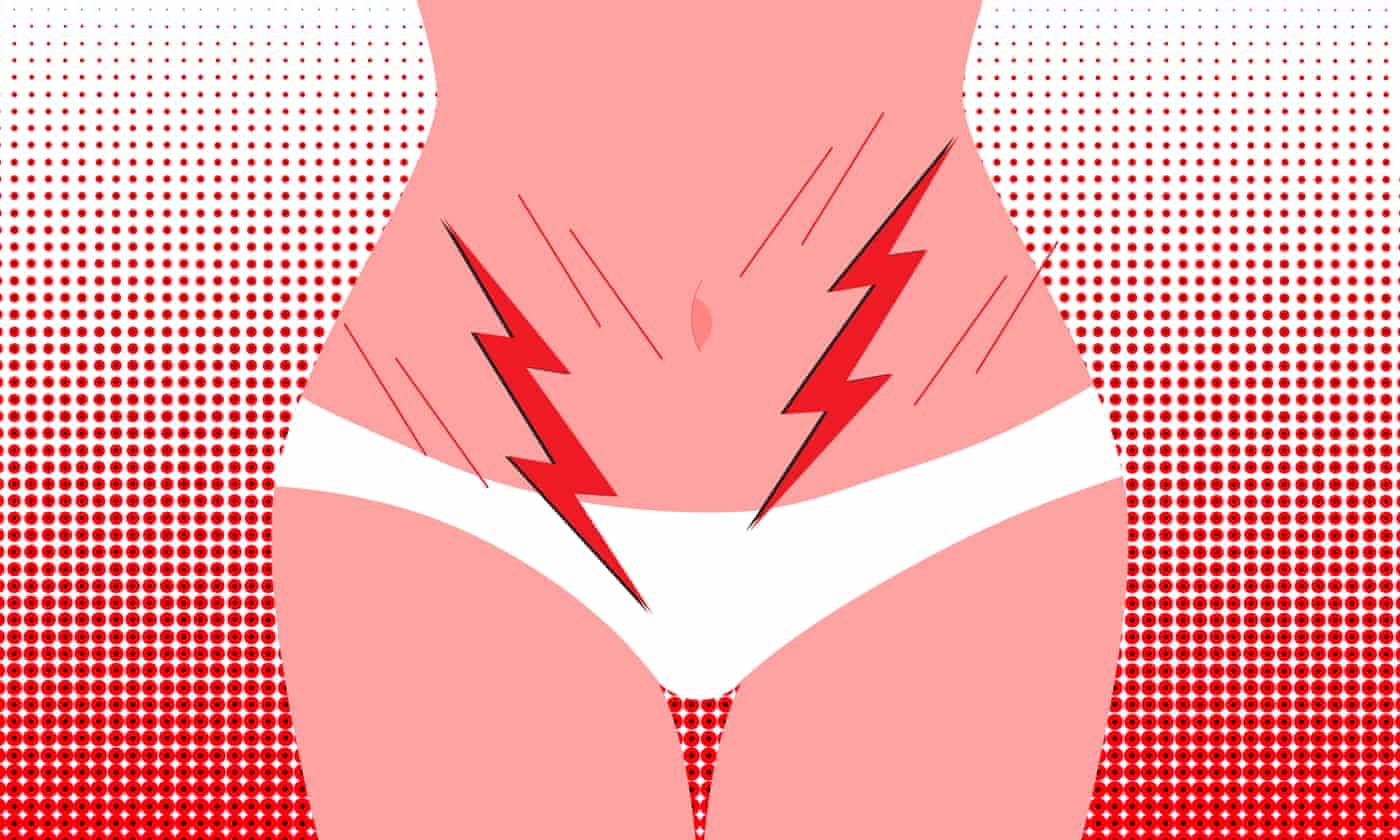Will we soon be able to ‘fix’ periods?
For many, menstruation involves pain, fatigue, mood swings and worse, yet there have been no new treatments for 30 years. Now science promises breakthroughs
It always happens at the worst possible moment. In a work meeting or at dinner with your partner’s parents. Panicked, you excuse yourself, lock the bathroom door and furiously try to wash the blood off the crotch of your trousers. Inevitably you think: how did we build a space station before fixing this?
Even for those not diagnosed with disorders like endometriosis or adenomyosis, menstruation can make everyday life stressful, if not unbearable. Up to 70% of menstruating under-25s experience pain, fatigue and mood swings, while nearly 30% across age groups report bleeding heavily. This puts them at risk of iron deficiency anaemia, a “global” and “totally under-recognised” problem, says Hilary Critchley, a gynaecologist and academic at the University of Edinburgh.
Cultural taboos, and the well documented dismissal of women’s pain, have hidden the scale of the problem, but it is also bigger than it used to be. Previous generations spent more time pregnant and undernourished, so they had fewer cycles.
Biologically, menstruation is odd. The vast majority of animals don’t do it
Besides womb surgery – which 30,000 undergo as treatment for heavy bleeding every year in England and Wales – and painkillers, treatment consists of blood clotting agents and hormonal contraceptives. While some use them successfully to lighten or even stop their periods, they don’t work well for everyone and may have unacceptable side-effects. “Almost everyone is bothered by this at some point,” says gynaecological surgeon Dharani Hapangama from the University of Liverpool, “so there should be easy, manageable treatments.” But according to Critchley, there has been “no new class of medical treatments for heavy menstrual bleeding for over 30 years”.
Chronic underfunding hasn’t helped. “You could theorise that there is a bias against women-related research,” says Günter Wagner from Yale University, who studies the evolution of menstruation . . "
Temple-Smith believes that the spiny mouse is overall the best model of human menstruation. “It’s getting harder and harder to justify work on primates, and the cost is phenomenal,” he says. Instead researchers use the induced mouse model, where a regular mouse has its ovaries removed, and is subjected to hormones that make it bleed from the womb. “I think if you’re honest about it, you need to have a natural model that works without the need to pump [it] up with progesterone and oestrogen.”

Some, like Hapangama, are sceptical that the similarity to humans is strong enough, and some things do differ: spiny mice don’t seem to naturally get endometriosis, for example. But for Wagner’s studies of evolution, there is little competition. He has just started his own colony. “To have a rodent is a huge opportunity,” he says. “It’s just such a chance.”
In one respect, spiny mice are so like humans that it complicates matters. . ."
READ MORE >> https://www.theguardian.com/society/2022/apr/10/will-we-soon-be-able-to-fix-periods



No comments:
Post a Comment